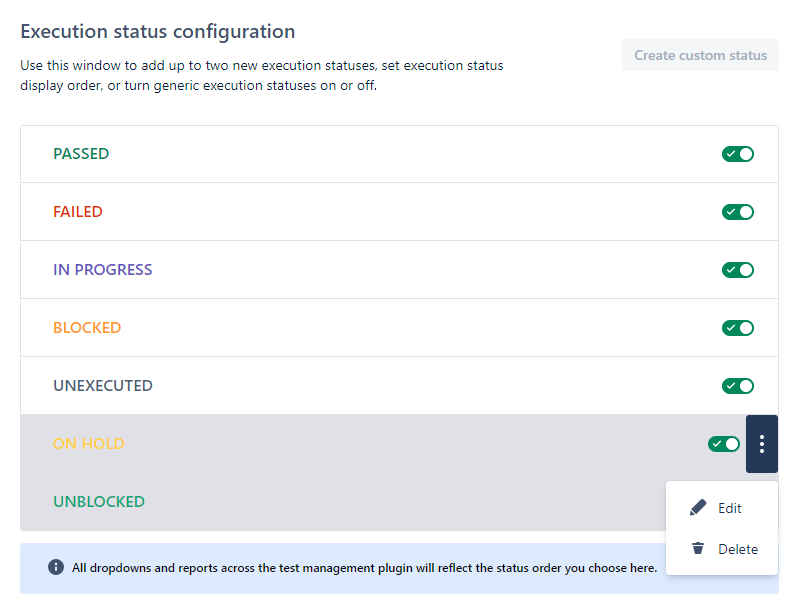Execution settings
Use the settings pane to manage and configure your test execution settings.
To open the settings pane, go to ![]() Settings > Test Management settings > Executions from the main application window.
Settings > Test Management settings > Executions from the main application window.
Test pad configurations
Use this window to enable or disable features for the Test Pad. After you enable a feature here, you can then access it in your Settings.
You can enable or disable the following items from Test pad configurations:
-
Enable Environments to create environments for your testing variables.
-
Enable Builds to create and assign builds to your tests.
-
Enable Execution timer to add a timer to your test pad.
Environments
From here you can create and manage environments that cover all of your testing variables. Select Create Environment to navigate to the Create Environment window, where you can enter the Name and Description for the environment.
For best results, be as specific as possible with your description, so you know exactly what element belongs to each environment.
Builds
From here you can create and manage builds to assign to your tests. Select Create Build to navigate to the Create Build window, where you can enter the Name and Description for the build. Use this tool to organize your tests by each software build, so you have accurate, easy-to-find versions.
Execution status configuration
From here, you can add or modify execution statuses, set your execution status display order, or turn execution statuses on and off.

Example of custom execution statuses in Tricentis Test Management for Jira
-
To create a custom execution status, select Create custom status. You can create up to two execution statuses at a time.
-
To edit or delete a custom status, select the menu next to the relevant status and then choose Edit or Delete, according to your needs.
-
To reorganize the display order of your statuses, simply click and drag the statuses to reorder them.
-
To turn an execution status on or off, switch the toggle next to the status you want deactivate or activate. Note that you can turn both custom and generic execution statuses on or off.